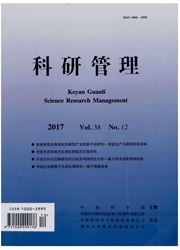

 中文摘要:
中文摘要:
财政补贴能够有效推进技术进步,但到一定时段应及时退出,代之以新的政策设计,不然会产生挤出效应,造成创新投入不足。本文把创新网络分为大幅度财政补贴阶段、补贴减少阶段和补贴部分退出后阶段三种情形,采用多智能主体Blanche平台进行仿真实验,对财政补贴退出前后的三类创新网络运行机制进行了仿真,分析了不同动力情形下的网络演化特征。结果表明,从商业模式创新和价值分享体系出发重构的多主体创新网络,以内部自行驱动取代政府外力推动,其绩效高于大幅度财政补贴、补贴减少过程中两个阶段的网络,新机制能够有效推动技术的进步。市场端财政补贴应当适时退出,技术端的财政补贴应该加大。
 英文摘要:
英文摘要:
Subsidies can effectively promote technological progress, but to a certain period should be promptly dropped out, and replaced by the new policy design, otherwise the crowding out effect will happen, resulting in lack of investment in innovation. In this paper, the innovation network is divided into three types, namely substantial financial subsidies network, subsidies reducing process network, and subsidies partly dropped out network. We use the multi - agent simulation Blanche platform to compare the three types of innovation network, and find out the evolution characteristic of innovation networks under different dynamic situa- tions. The study results show that reconstruction of the multi - agent innovation network from the perspective of business model innovation and value share system, with internal driving mechanism to replace the government forces to promote itself, its per- formance is higher than the other two stages. The new mechanism can effectively promote technological progress. Market end sub- sidies shall be dropped out timely while the technology end subsidies should be strengthened.
 同期刊论文项目
同期刊论文项目
 同项目期刊论文
同项目期刊论文
 期刊信息
期刊信息
